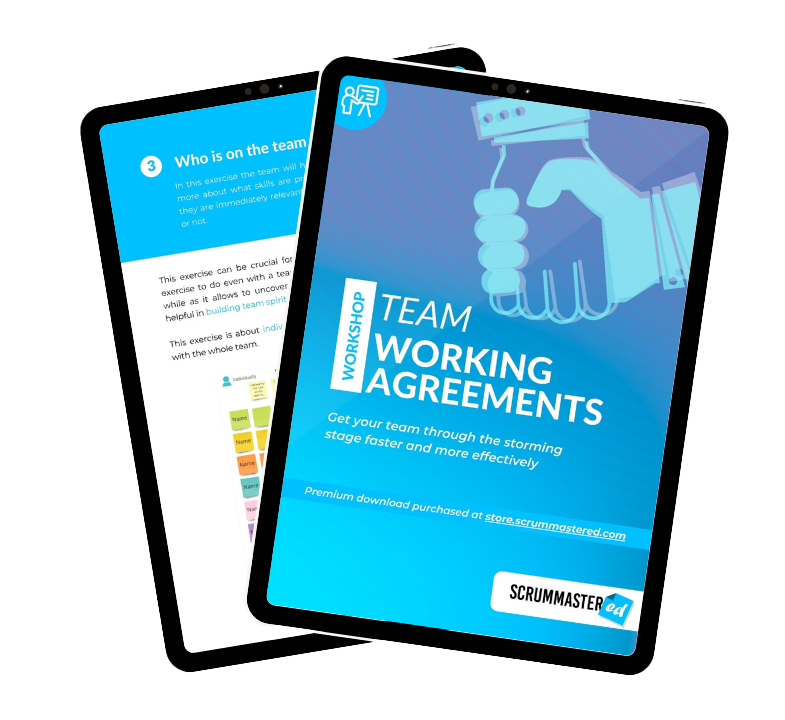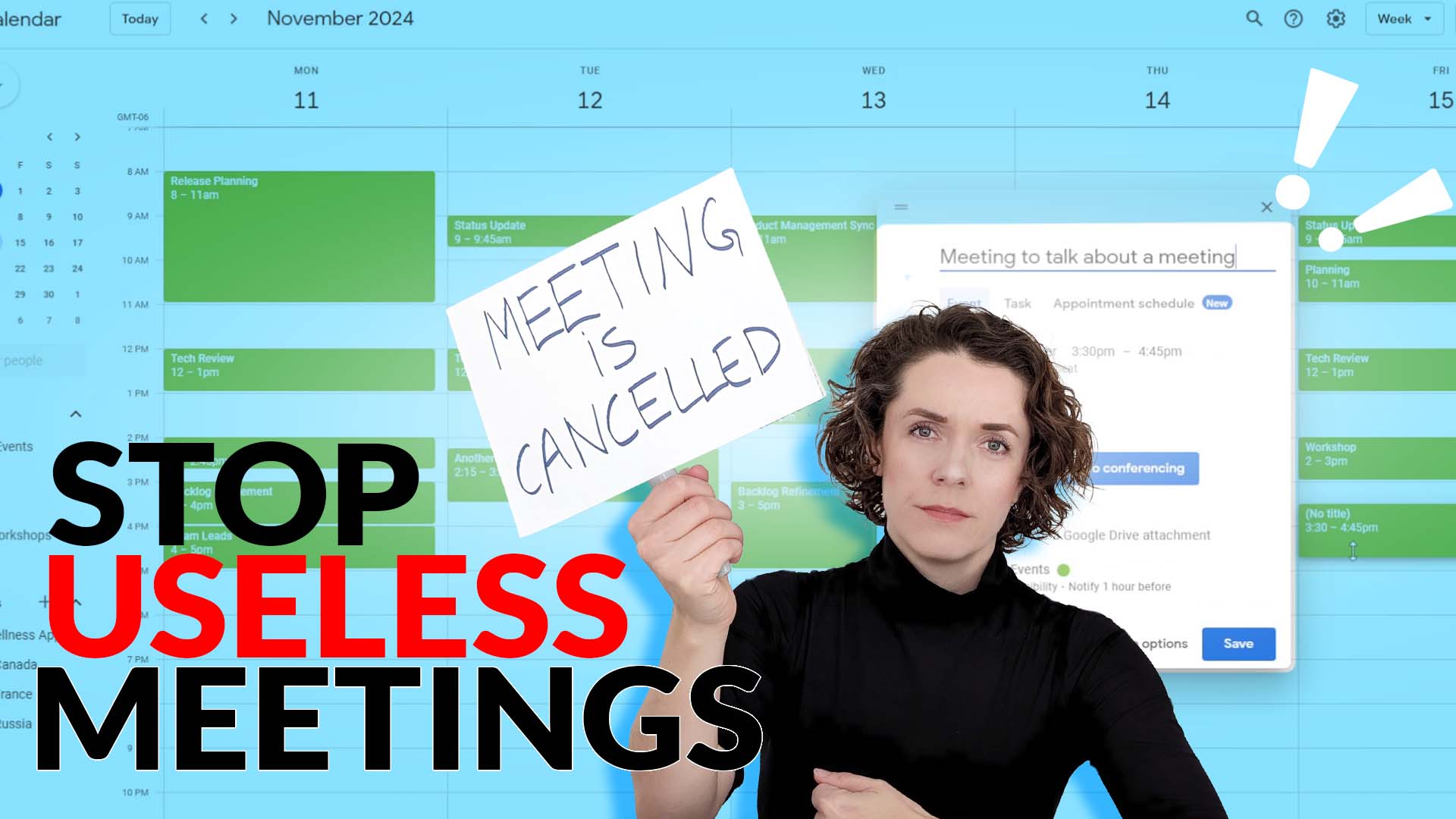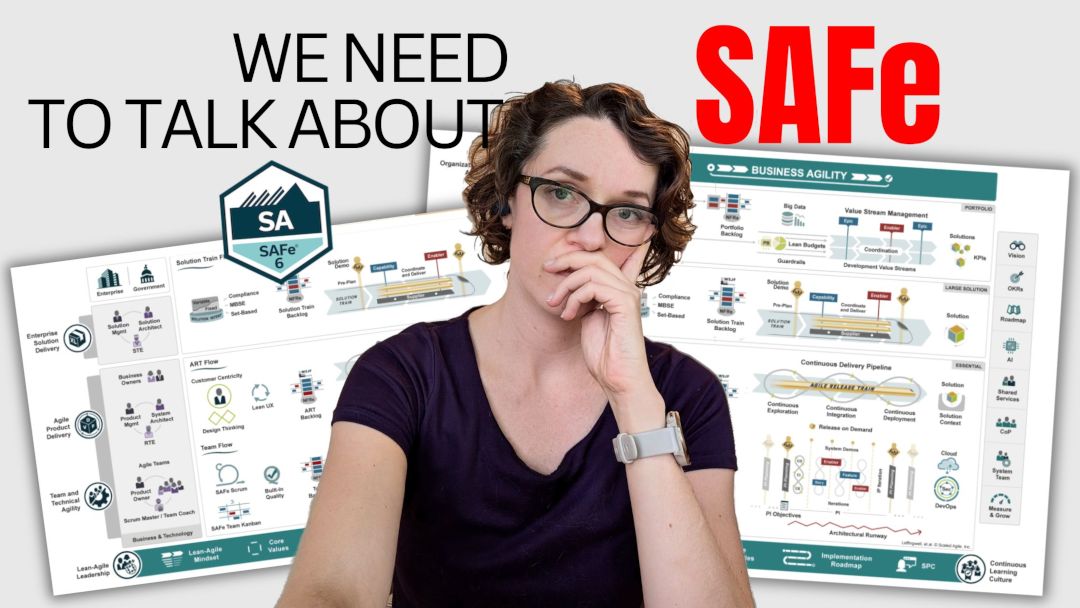You can’t have a high-performing team if there is no trust.
Though creating trust in a team can be quite challenging, especially, in a completely remote setting.
I’d like to share my experiences in building trust in team to give you some practical tips and actionable advice you can follow.
Most of us heard about the study conducted by Google that showed that the highest-performing teams have one thing in common: psychological safety.
What is it actually?
Watch the video or keep reading…
Psychological safety is…
Psychological safety is a sense of confidence that the team will not embarrass, reject or punish someone for speaking up. It’s the belief that you won’t be punished when you make a mistake. It describes a team climate characterized by interpersonal trust and mutual respect in which people are comfortable being themselves.
For me this all describe an environment of trust in a team overall.
Now, let me clarify what kind of trust we are talking about here.
And I’ll quote Patrick Lencioni from my favorite talks of all time.
We are not looking for a predictive trust where we worked together for long enough that we know what to expect from each other.
We want to create a vulnerability based trust.
This is the kind of trust environment where people are willing to show their weaknesses, ask for help, apologize, admit mistakes.
All in all – where people are not afraid to be vulnerable.
This is the hardest kind of trust to create. It requires courage from every team member to take the first step. And once this step is taken, it requires the appropriate response from the team. And, honestly, people don’t always know what to do here.
Trust can be killed in a second
Trust can be easily destroyed in a second.
And once the trust has been broken it takes a very long time to rebuild.
Even if your team has been working together well for months or even years, one trust-breaking action can take them backwards to the very first stage of their team development.
If you are not sure what I’m talking about, I have this video where I explain the Tuckman’s stages of group development.
One of the easiest ways to kill trust is to withhold information.
This can be represented in many ways. For example, when the real progress and status of work is not properly shown. Or when someone disagrees with a decision and doesn’t say anything. Or maybe someone got offended by something said and done, and didn’t say anything. Or it might be about selectively giving information to only some people.
And why I highlight this one here is because these actions might be seen in a positive way, you know, like white lies.
“Oh, I didn’t say anything because I didn’t want to be a party pooper” or “I didn’t want to offend someone’s feelings”.
And that is why this is so dangerous.
When it comes to vulnerability based trust, white lies are a disease.
And I’ll talk a bit more about this in my tips on how to build trust.
By the way, let’s talk about those!
What to do to build trust in a team
I have some tips and advice you can follow, however, it is not an exact science and I don’t have a guide.
You’ll need to navigate your team dynamics and people personalities on your own to find the best approaches.
But if you actually follow through with the steps I’ll share, you will be able to create a better working environment in your team with foundations of trust.
Now let’s get back to our trust building and the seven actions you can take to create the foundation for an environment of trust.
Start with yourself
As I said earlier, trust requires courage to take the first step.
And if you are a Scrum Master or a leader in a team, you have to start with yourself if no one else is ready to do it yet.
It means that you will have to put yourself out there, admit mistakes, or weaknesses, before you actually have trust in others.
The way I like to do it is to be very upfront with the teams about myself.
I would say something like “I might not know everything about your work so I’ll be asking some questions that might seem stupid” or “You are the expert in your work so I’ll have to rely on your to guide me”.
And if I make a mistake, I admit it. For example, I remember I promised to do something for a team and I completely forgot. So when the team came back I wasn’t trying to defend myself saying that I was extremely busy. I just said “I’m really sorry, I completely forgot. It’s my bad. Let me fix this”.
Scary? Well, it’s only the first step.
Create transparency
There is no trust without transparency. And there is no transparency without trust. It’s kind of a chicken and egg problem.
You have to start somewhere, so start with transparency.
The more information you can make available, the better.
This relates to how the teams work and interact with each other, various processes, reporting lines, etc.
And of course, another important thing to make transparent is challenges. This is usually something that stay hidden or is only shared with specific people.
Help your team document and communicate what is impeding their progress.
This means being their voice in front of the executives, leaders, and other interested parties.
Set expectations
You might be getting tired of me talking about this, but it’s an important part in building trust.
What I mean is, of course, team working agreements 🙂
I don’t want to dig too deep into this one since I talked about it many times in various videos.
But just to give you a quick recap.
If your team spends time upfront on discussing how they want to work together, it will make it easier to build trust since the right expectations have been set, or at least, voiced.
Of course, as the team develops, some things will change.
Having a baseline team working agreements is going to set the foundation for it.
If you need help with creating working agreements for your team, I have a great guide and template for this in my store!
Hold people accountable (including yourself)
This one is a hard one but is it absolutely necessary for building long term trust.
Remember earlier I talked about withholding information.
Usually when it comes to holding others accountable, people tend to not saying anything instead because it might feel uncomfortable to speak up.
This is where you should come in, and it might mean that sometimes you have to play a bad cop reminding the team about their commitments and their accountabilities.
And of course, don’t forget about holding yourself accountable for your own work. Maybe even ask your team to do it for you if they feel that you are dropping the ball.
Focus on team goals
We are talking about building trust in a team, not with individuals. It means that we need to put enough focus on team goals.
Due to how organizations usually function, the performance is always evaluated on the individual level. Each person has their own goals to achieve.
This of course leads to team members putting more effort into individual goals instead of the team goals. And that might create tension and distrust towards each other – are others really thinking about the team or just about themselves?
You might not be able to change the whole HR structure in your company, but you need to build more focus around the team goals instead.
Make sure that the common goals are clear and visible, and that the team understands how achieving team goals helps them achieve their individual ones.
In addition, continuously coach your team on the concept of shared accountability – if one person fails and this leads to the team failing, you personally fail as well.
So keep tabs on the success of the team instead of just your own.
Communicate on a daily basis
Especially, if the team is working remotely.
This really goes in alignment with transparency. I just wanted to highlight it as a separate bullet point as well.
Think of having an old friend. If you haven’t seen or talked to them in 5 years, you might not have the same level of trust towards them even if previously you were total BFFs.
Except that in an organization, this kind of relationship deterioration happens much faster.
Firstly, because you most likely won’t be total BFFs with every team member. And secondly, because there is also complexities of work involved.
Make sure that the whole team has regular touch points every day to sync up.
You know, like Daily Scrums 😉
Team Agreements Workshop
Help your team agree on how they want to work together and get to the performing stage faster with this workshop Team Agreements. A step-by-step facilitation guide and Miro templates for virtual delivery.

Be personal
And the last point I’d like to highlight is around building personal relationships.
We spend so much time at work…
Why not make it count?
I talked about how you can use ice breakers and other team building activities to help with that in my previous videos: “5 easy ice breakers” and “Managing time zones”.
So go check them out for more ideas.
It is much easier to build an environment of trust with people who we know personally.
To summarize, you can use these simple techniques to create foundation for trust in your team:
- Start with yourself – you have to put trust in your team first before they can put trust in you and each other.
- Create transparency
- Set expectations
- Hold people accountable (including yourself)
- Focus on team goals
- Communicate on a daily basis
- Be personal
I hope you learned something new today!
And what are some of the techniques and tools you use to create an environment of trust?
Share in the comments below.



